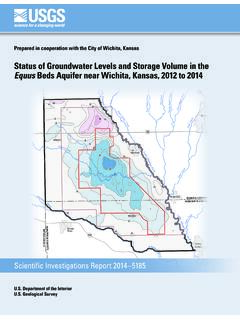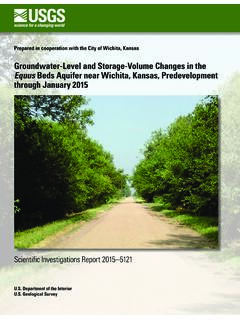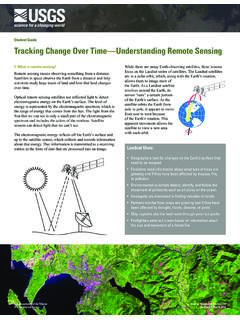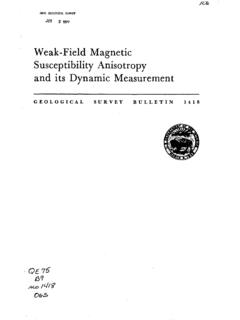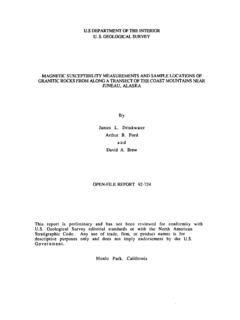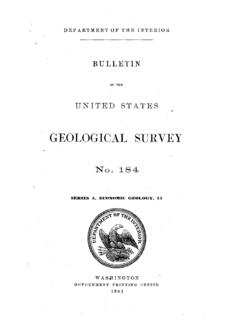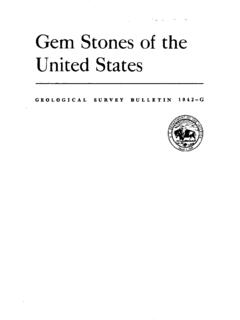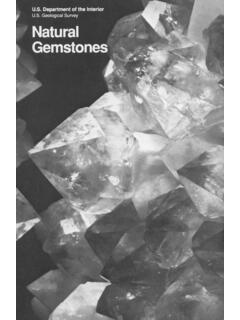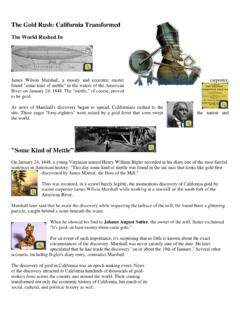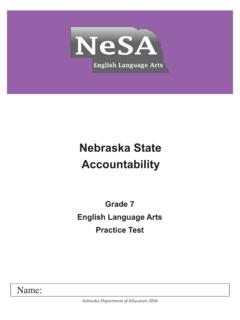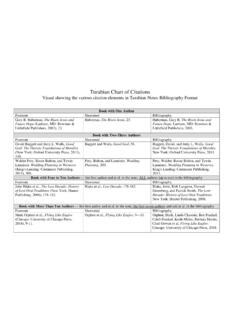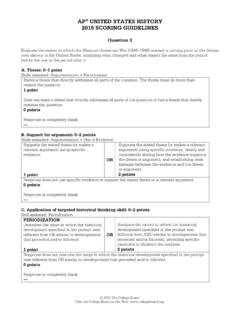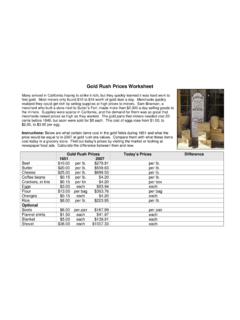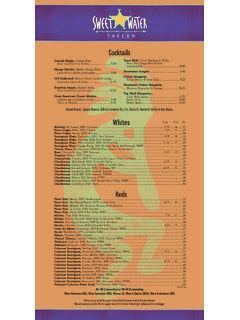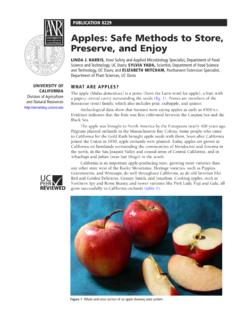Transcription of Placer Gold Deposits of New Mexico - USGS
1 Placer gold Deposits of New MexicoBy MAUREEN G. JOHNSONGEOLOGICAL SURVEY BULLETIN 1348A catalog of location, geology, and production, with lists of annotated references pertaining to the Placer districtsUNITED STATES GOVERNMENT PRINTING OFFICE, WASHINGTON: 1972 UNITED STATES DEPARTMENT OF THE INTERIOR ROGERS C. B. MORTON, SecretaryGEOLOGICAL SURVEY E. McKelvey, V. DirectorLibrary of Congress catalog-card No. 72-600248 For sale by the Superintendent of Documents, Government Printing OfficeWashington, 20402 - Price $ (paper cover)Stock Number 1 History of Placer mining in New Mexico -_____-_-_____ 1 Purpose and scope of present study_____ 2 Colfax County___ _____-_-__--___--____---_---__-_____--- 41: Elizabethtown district_____-_____-____-___-_-_-_-_____ 42. Mount Baldy placers_____ 53. Cimarroncito district_____ 7 Grant County_____ 74. White Signal _____ 75. Pinos Altos district_____ 96. Bayard 10 Hidalgo 117. Sylvanite 11 Lincoln County_____ __ __ _ 128.
2 Jicarilla district_____-_____--_-__--_-_____- 129. White Oaks 1310. Nogal district_____ _____ 13 Mora County_____ 1411. Mora River placers (Rio La Casa district) 14 Otero County. _____ _____ 1512. Orogrande (Jarilla) district_____ _ 15 Rio Arriba County_____ 1613. Hopewell _____ 1614. El Rito _____ 1715. Rio Chama Placer (Abiquiu district)_____ 17 Sandoval, Bernalillo, and Valencia Counties_____-_-___-_____- 1816. Placitas-Tejon region_____ __ _____ 1817. Tijeras Canyon 1918. Hell Canyon region_____ 19 San Miguel County_____-_____-_--_-_____-_____- 2019. Willow Creek __ __ _____ 2020. Villanueva area_____-----___--_-------_---___-____- -_-_- 2121: Las Vegas area_____ ___--_ -- -_ -___-_--_ 21 Santa Fe _ __ _ - 2222. Old Placers district (Dolores, Ortiz)_____ _ 2223. New Placers district (San Pedro)_____ 2324. Santa Fe district_____ 25 Sierra County_____-------------_-_ __--- 2525.
3 Hillsboro district (Las Animas placers)_____-___-_-_-___-_____-_ 2526. Pittsburg district (Shandon, Sierra Caballo)_____ 2627. Chloride district (upper Cuchillo Negro placers)__-__-_-_____--___- 28illIV CONTENTSPageSdcorro County_____ 2828. 28 Taos County,_____ 2929. RioGrande 2930. Red River district_____ 2931. Rio Hondo 3032. Picviris 31 Union County. ____-_-___---_____-__--_____-_____-_____ -_-_____ 3233. Folsom 32 Other Placer deposits_____--_-_---_-_-_-_------___-__ --- 32 gold production from Placer Deposits ____-___-_--_--___-_____,____ 36 Bibliography__ . 38 Literature _ -_-_-_____ __ 38 Geologic map references. _____ 44 ILLUSTRATIONPLATE 1. Index map of New Mexico Placer districts _____ In pocketTABLESPage TABLE 1. New Mexico Placer gold 342. Major gold districts in New Mexico_____ 36 Placer gold Deposits OF NEW MEXICOBy MAUREEN G. JOHNSONABSTRACTT hirty-three Placer districts in New Mexico are estimated to have produced a minimum of 661,000 ounces of Placer gold from 1828 to 1968.
4 The location, areal extent, past production, mining history, and probable lode source of each district are summarized from a wide variety of published reports relating to Placer Deposits . An annotated bibliogaphy of all reports that give information about individual Deposits is given for each Placer gold Deposits in New Mexico are derived from gold -bearing mineralized areas in Tertiary intrusive rocks, and occur in gravels of alluvial fans, gulches, and rivers adjacent to the source. A few Deposits are derived from gold -bearing Pre- cambrian crystalline or Tertiary volcanic rocks. Most of the major Placer districts were discovered and extensively worked between 1828 and 1880; in later years, large-scale dredging operations were successful at a few localities, while intermittent activity continued at most HISTORY OF Placer MINING IN NEW MEXICOP lacer mining began in 1828, when the rich Placer Deposits of the Ortiz Mountains, Santa Fe County, were discovered (Jones, 1904, p.)
5 21). Even before that discovery, New Mexico was the scene of some mining activity. The Pueblo Indians mined and used turquoise for ornaments, and there is some evidence to suggest that they used gold (probably collected from gravel Deposits ). Alvar Nunez Cabeza de Vaca, who stayed with the Pueblo Indians on his journey from Florida to Mexico , spread stories of gold and silver possessed by these Indians. Coronado left Mexico in 1540 with a large expedition to find and exploit the source of this supposed vast wealth. He found no great riches, and, after exploring the land, returned to Mexico in 1542. The Spanish returned to the territory in the late 1500's, established missions, and may have done some mining, for after the Pueblo revolt in 1680 the Indians stipulated that the Spaniards were not to engage in mining but were to confine their activities to agriculture. Placers were reportedly worked along the Rio Grande (Taos County) in the 1600's.
6 The real2 Placer gold Deposits OF NEW Mexico development of mineral resources began in 1800 after an Indian disclosed the location of the rich Santa Rita copper Deposits to a Spanish officer. The first shipments of copper to Mexico were made in was discovered in the Ortiz Mountains at Old Placers in 1828. New Placers was discovered in 1839, and before 1846 minor Deposits of Placer gold were found at Taos and Abiquiu and in the Sangre de Cristo Mountains (Prince, 1883, p. 243). The placers along the Rio Grande were probably mined intermittently from 1600 to 1828 Placer gold was found at Rio Hondo in 1826 but it was the discovery in the Ortiz Mountains that marked the 'beginning of real interest in New Mexico placers. During the decade 1860-70, many Placer Deposits were found and exploited, including the rich Deposits at Elizabethtown (Golfax County) and Pinos Altos (Grant County). Many discoveries of rich lode Deposits followed as a result of the Placer discoveries.
7 By the end of the 19th century, many of the placers dis- covered were already exhausted. In 1901 a prospector located the placers at the foot of the Caballos Mountains in Sierra County and tried (unsuc- cessfully) to keep the location of his rich find a secret. By 1903 the secret was out, and a gold rush to the Caballos Mountains followed. In 1908 the discovery of placers at Sylvanite (Hidalgo County) caused the last gold rush in New of some Placer Deposits , and abandonment of many others, continued until the depression years of the early 1930's. Placer mining all over the West underwent a great revival during the depression; many indi- viduals turned to Placer Deposits to earn a grub stake or just a meal ticket. During this period much attention was given to the invention and develop- ment of a myriad of jigs, drywashing machines, and separation methods for recovery of gold from placers and the literature describing these techniques is voluminous.
8 After the boom of the 1930's, the war years of the 1940's were a setback to gold mining activity. War Board Order L 208 greatly restricted the development of gold mines; prospecting and mining metals essential to the war effort was deemed more important than mining for gold . More important, however, the economy of the 1940's encouraged work in offices, factories, war industries, and supporting industries, for those not in military service. Many miners and prospectors left the field for the cities and never returned. New Mexico , never a rich gold Placer State in comparison with California or Oregon, never again attained the productivity in Placer mining it once AND SCOPE OF PRESENT STUDYThe present paper is a compilation of published information relating to the Placer gold Deposits of New Mexico , one of a series of four papers describing the gold Placer Deposits in the Southwestern States. The purposeINTRODUCTION 6of the paper is to outline areas of Placer Deposits in New Mexico and to serve as a guide to their location, extent, production history, and source.
9 The work was undertaken as part of the investigation of the distribution of known gold occurrences in the Western United Placer is described briefly. Location is given by geographic area and township and range. Topographic maps and geologic maps which show the Placer area are listed. Access to each area is indicated by direction and distance along major roads and highways from a nearby center of information relating to the exact location of Placer Deposits , their thickness, distribution, and average gold content (all values cited in the text have been converted to gold at $35 per ounce, except where otherwise noted) is included, where available, under the section entitled "Extent."Discovery of Placer gold and subsequent Placer -mining activity are briefly described in the section entitled "Production History." Detailed discussion of mining operations is omitted, as this information can be found in the individual papers published by the State of New Mexico , in the yearly Mineral Resources and the Mineral Yearbook volumes published by the Bureau of Mines and the Geological Survey, and in many mining journals.
10 Placer gold production, in ounces (table 1) was compiled from the yearly Mineral Resources and Mineral Yearbook volumes and from information supplied by the Bureau of Mines. These totals of recorded production are probably lower than actual gold production, because sub- stantial amounts of coarse Placer gold commonly sold by indivduals to jewelers and specimen buyers are not reported to the Bureau of Mines or to the Bureau of Mint. Information about the age and type of lode deposit that was the source of the Placer gold is discussed for each detailed search of the geologic and mining literature was made for in- formation concerning all the placers. A list of literature references is given with each district; the annotation indicates the type of information found in each reference. Sources of information are detailed reports on mining districts, general geologic reports, Federal and State publications, and brief articles and news notes in mining journals.
